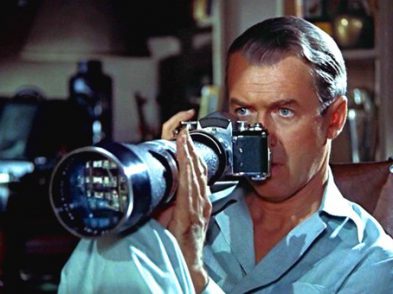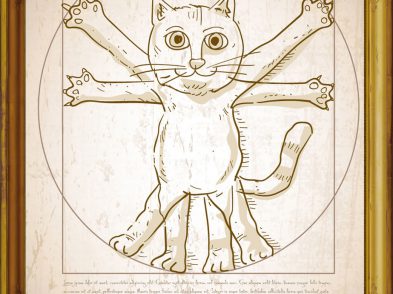
The Florentine is publishing this series of interviews on the occasion of Vogue Fashion’s Night Out on September 17, 2015.
Filippo Disperati, a young and emerging Florence-based fashion designer, has an extensive background in designing luxury handbags for high-end labels such as Bally and Gherardini. He presented his latest collection during the Pitti Uomo #88 at Fresh in Florence—a temporary showroom hosted by Bjork in the Oltrarno district—and was selected by the renowned e-commerce Not Just a Label as one of seven emerging international designers. In our recent interview, Disperati speaks of his journey so far and of where he hopes to see himself in the future.
Shay Young: How did your interest in fashion begin?
Filippo Disperati: My interest in fashion began as a child. Every Sunday night I watched a TV show called NonSoloModa, which presented content about art, design, travel, fashion shows and trends. This program fed my hunger of fashion, which led me to attend art school. I decided to go to Polimoda, and apparently destiny wanted me to enter the famous fashion institute on the same year when the dean changed. The new dean was Linda Loppa, one of the most important people on the international fashion scene due to her talent scouting activity and for being the one who discovered and supported the well-known Antwerp Six group, designers who changed the fashion history of the ‘90s forever. Her unique vision of fashion has deeply influenced my art.
SY: I saw your first collection online and I was intrigued by your use of straw as a material. Can you speak a little bit more about why you use straw so much?
FD: Florence is the city of craftsmanship, and straw is one of the best-known worldwide Florentine products of the past. For my first collection, Raphia Spring/Summer 2015, I took inspiration from this kind of art—not to make the traditional hats but to make clothes instead. The idea was to create a raffia-based capsule collection, pushing this material to new results and interpretations, since it’s commonly just used to make accessories. It was a collection of black skirts in which the handmade braiding process was a basic side of the project. In fact, every skirt featured a different type of knitting point with straw. I presented the collection with white shirts to give importance to the skirts and their structures. Of course I also made accessories: a pair of sandals, a backpack and a little bag, all in raffia.
I had worked with leather for the last two years, but for a personal lifestyle choice I decided instead to use only cruelty-free materials because I really love animals. Cruelty-free leather is really costly though, and when you design a collection you have to think about who will buy your things for the first time. It’s very rare that people pay a lot of money for a new brand, even if the quality is very high.
SY: In your press release you say ‘Raphia is about the female body in teenage years.’ Why did you choose the teenage years?
FD: For the Raphia collection I took inspiration from a lot of old pictures of my mother when she was a teenager, and while I designed the collection I also listened to the music of Grimes; it’s like dreamy pop music and she’s very young, 23 years old I think, but she always looks like a teenager. I couldn’t be more inspired than that.
SY: Is there someone in the fashion industry who inspires you?
FD: I have a few brands that inspire me, but in this moment my favorite is Loewe. It’s a very old luxury leather brand that recently changed its classic style thanks to the new creative director, the London-based designer Jonathan Anderson. Not only did he move the headquarters from Madrid to Paris, he also completely changed the look of Loewe, and made an old leather accessory brand into a new trendsetter on the international fashion scene.
SY: What’s your personal relationship with Florence?
FD: Although I grew up and studied in Florence, I also have experiences abroad, such as when I went to school in Paris. For me, Paris is the only place besides Florence that I would want to live because of the romantic atmosphere, something that is also present in Florence. Florence is very important for my career in fashion design. Apart from my own line, I work also for other brands as an accessory designer—my latest experience was at Gherardini, a very old famous leather goods brand in Florence.

SY: What projects are you currently undertaking and where do you see yourself in the future?
FD: Now I’m presenting my Fall/Winter 2015 collection, whose look book was shot in Milan by the very young and talented photographer Marcello Arena. The inspiration is the homeless, and it basically comes from the iconic song of the 90’s by Crystal Waters, ‘She’s homeless.’ I listened to it almost every night while I was designing the clothes. I used a lot of wool, but knitted in an unusual way: if you look at the dresses there are evident holes such as what would be found on a homeless person’s attire. Additionally, the collection can also be seen as sporty as it takes references from the hunting world, especially the heavy trousers with pads.
I made many accessories for the collection because it’s something that I really like, but of course they have to be practical—if you try the bags you’ll find that they are very lightweight, which is important for women given the amount of stuff they carry around with them. I used Alcantara for the bags, a material that is similar to leather but it’s lighter, less costly, plus it’s a synthetic fiber. I also created a sporty backpack that you can wear in two different ways, as either a crossbody or as a shouldered backpack.
For the jewelry I used vintage buttons or vintage broaches. In the look book you’ll see that my collection is listed for womenswear, but it’s actually unisex; I started from a male perspective, and there are many references to hunting wear. I believe that no-gender is the future of fashion, and I hope to become a leader in that.
About Fashion in Florence
In May-June 2015 ISI (International Studies Institute of Florence) offered an innovative class in Fashion Communication for non-specialized students in design. Emphasis was on analysis of leading fashion media critics, commentators, bloggers and influencers. Students had the opportunity to visit one day of Pitti Uomo #88 at the Fortezza da Basso and write their reports and blogs including one-on-one interviews with leading young figures in Fashion in Florence. Professor Emeritus Mark Bernheim headed the team, which included fashion commentator and assistant Alessandro Masetti, and his colleagues. The Institute plans to offer this course again in 2016.




